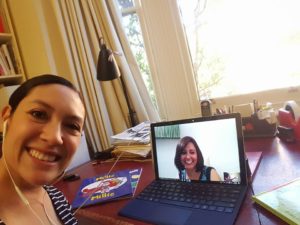It may seem obvious that we should know where to buy bilingual children’s books. However, for some reason, sometimes it seems that bilingual books are such a niche that it’s hard to come by good books.
Here are 5 ideas on where to buy bilingual children’s books. No matter what language combination, you are sure to find something.
- Amazon: Needless to say, this is the number one in my list. On Amazon, you can find bilingual books in any language combination ready to be shipped to you no matter where you are in the world. Amazon will be your most convenient option. Make sure to use the search engine exactly what you are looking for, and you will be able to find bilingual children’s books of any subject and for any age! If you want to check out the books I’ve written and illustrated, you can check out my Amazon author page.
- Your local bookstore: If supporting your local stores aligns more with your values, you can go to your local bookstore and actually have a chat with the owner or the store person. Depending on your area they may be able to recommend some ideas or, if you don’t live in a bilingual area, you can ask to order the book by providing the ISBN. This will take some more research and time on your part, but it will strengthen your sense of community.
- Facebook groups: Join various local Facebook groups for parents or for dual language speakers in your area. More often than not, you will be able to connect with parents who are trying to offload their bilingual books when their children have outgrown them. You might even get them for free. I recently gave an entire crate with baby and toddler books in English and Spanish to a friend who recently had new babies.
- Local events and book fairs: If you live in a multicultural city, there will be for sure events organised by different community groups. In my case, the Mexican community organises a lot of fun events for anyone who wants to join and enjoy. The awesome thing about these events is that you get to meet the authors in person and get the books directly from their creator! It’s much more personal and I have to say, when I’ve set up market stalls, children really smile when they find out I actually wrote the books!
- Social media: All social media, including Facebook, Instagram, TikTok and others are also search engines. The cool thing is that if you type “Bilingual children’s books + [insert target language]” you will be able to find many independent authors and/or publisher accounts. There are also book bloggers that have great recommendations. Even better, once you do a few searches, the algorithm will lead you to discover many more books alternatives. Once you find them all you have to do is go to their links and buy directly from the authors or find the book on your favorite online bookstore.
And there you have it, 5 places where to buy bilingual children’s books. Have I missed any options? which one is your favorite?
Happy Reading!
Erika
 A couple of years ago, I was lucky enough to spend Christmas in London. One day, my husband and I took some sharing bikes and went for a ride along the Thames and under so many bridges and lanes and alleys. It was a lot of fun! Does it ever happen to you that you are in one place and you just really absorb with all your senses everything that is happening around you? And then you take a mind photo of a particular place from your point of view? Well, this happened to me here and I knew I wanted Millie go there one day. I picked red because of how the buses pop in the greyness of the city.
A couple of years ago, I was lucky enough to spend Christmas in London. One day, my husband and I took some sharing bikes and went for a ride along the Thames and under so many bridges and lanes and alleys. It was a lot of fun! Does it ever happen to you that you are in one place and you just really absorb with all your senses everything that is happening around you? And then you take a mind photo of a particular place from your point of view? Well, this happened to me here and I knew I wanted Millie go there one day. I picked red because of how the buses pop in the greyness of the city.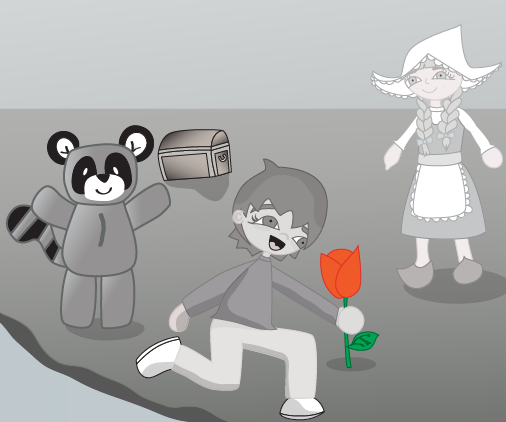 My favourite flowers are tulips, especially when they are in a field lots of them one after the other. In 2002, I went to the Netherlands on a trip for university and I didn’t get to see any tulip fields! Sniff! This is because most of the time I spent it at the ports and the fresh produce markets. I did get to go to the Mexican Embassy which was a very nice highlight. I picked orange because it’s a very Dutch colour (it’s the colour of the Dutch royal family and they use this colour in international sport).
My favourite flowers are tulips, especially when they are in a field lots of them one after the other. In 2002, I went to the Netherlands on a trip for university and I didn’t get to see any tulip fields! Sniff! This is because most of the time I spent it at the ports and the fresh produce markets. I did get to go to the Mexican Embassy which was a very nice highlight. I picked orange because it’s a very Dutch colour (it’s the colour of the Dutch royal family and they use this colour in international sport).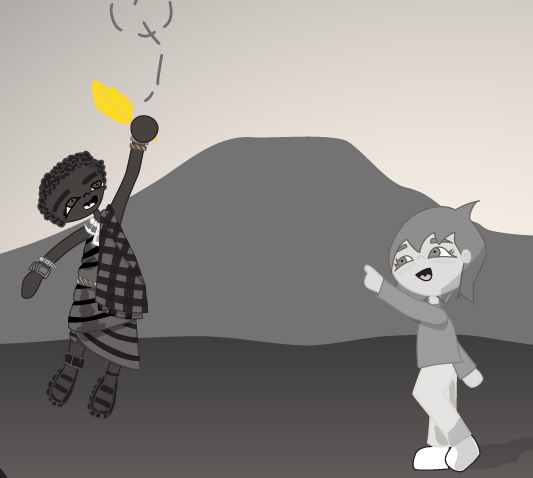 Kenya has been in mi bucket list since I saw The Lion King (don’t laugh at me). I imagine one day being able to see the coolest animals of the planet in their natural habitat. I have a friend from Kenya who helped me work out the typical way of dressing of the Masaii people that you will see in the book. In this illustration, I wanted to show the openness and the famous fiery sky. I know the greyness of the illustration doesn’t do it justice at all, but it’s part of the story. The bird you see in the illustrations is a Little yellow flycatcher, they are cute!
Kenya has been in mi bucket list since I saw The Lion King (don’t laugh at me). I imagine one day being able to see the coolest animals of the planet in their natural habitat. I have a friend from Kenya who helped me work out the typical way of dressing of the Masaii people that you will see in the book. In this illustration, I wanted to show the openness and the famous fiery sky. I know the greyness of the illustration doesn’t do it justice at all, but it’s part of the story. The bird you see in the illustrations is a Little yellow flycatcher, they are cute! Since I was in junior high school I’ve always wanted to go to Brazil. Not only because Brazil wins a lot at the World Cup, but also because I think it’s such a happy and exuberant country. They also speak Portuguese which to me it sounds beautiful! The background that you will see in the book is from Copacabana beach and I picked green because that’s the main colour in the Brazilian flag.
Since I was in junior high school I’ve always wanted to go to Brazil. Not only because Brazil wins a lot at the World Cup, but also because I think it’s such a happy and exuberant country. They also speak Portuguese which to me it sounds beautiful! The background that you will see in the book is from Copacabana beach and I picked green because that’s the main colour in the Brazilian flag. Of course, I was going to include my home country in this book! And not only that, the illustration in the book shows the cathedral at my hometown Guadalajara. This really old church is in the centre of the city and it is an iconic building with its yellow towers. When I was growing up, there were stories of ghosts and secret tunnels! Outside this place, it’s very common to see families walking together, kids blowing bubbles, a person selling colourful balloons and food stalls. In this illustration, I wanted to show that blue corn actually exists. It’s even healthier than yellow or white corn.
Of course, I was going to include my home country in this book! And not only that, the illustration in the book shows the cathedral at my hometown Guadalajara. This really old church is in the centre of the city and it is an iconic building with its yellow towers. When I was growing up, there were stories of ghosts and secret tunnels! Outside this place, it’s very common to see families walking together, kids blowing bubbles, a person selling colourful balloons and food stalls. In this illustration, I wanted to show that blue corn actually exists. It’s even healthier than yellow or white corn.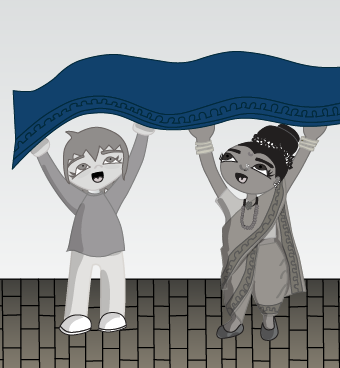 One of my best friends here in Melbourne is from Mumbai. I remember when I told her the idea of my books and she loved it. I can’t tell if I told her I wanted to put India or if she told me. At this point, I had decided to include a local kid in each country. My friend helped me a lot in getting the Marathi girl right. You’ll see her sari is draped like pants because women from this region worked in the fields and they needed to move more freely. The image you see in the book shows the Gateway of Mumbai and the Taj Hotel. They are both very famous buildings in the city of Mumbai. I matched this colour in this part of the story because India has been a very large producer of Indigo dye (as you can imagine by the name). A lot rainbow depictions exclude indigo from the colours of the rainbow because it can be indistinguishable from blue and violet. Apparently, when Isaac Newton discovered the colours of the rainbow, tried to match the number of colours of the rainbow with the seven musical notes and the seven days of the week. So until I hear anything official, indigo will stay.
One of my best friends here in Melbourne is from Mumbai. I remember when I told her the idea of my books and she loved it. I can’t tell if I told her I wanted to put India or if she told me. At this point, I had decided to include a local kid in each country. My friend helped me a lot in getting the Marathi girl right. You’ll see her sari is draped like pants because women from this region worked in the fields and they needed to move more freely. The image you see in the book shows the Gateway of Mumbai and the Taj Hotel. They are both very famous buildings in the city of Mumbai. I matched this colour in this part of the story because India has been a very large producer of Indigo dye (as you can imagine by the name). A lot rainbow depictions exclude indigo from the colours of the rainbow because it can be indistinguishable from blue and violet. Apparently, when Isaac Newton discovered the colours of the rainbow, tried to match the number of colours of the rainbow with the seven musical notes and the seven days of the week. So until I hear anything official, indigo will stay. This country has also always been on my bucket list. Maybe it’s all the anime I watched as a little girl, the orderly culture and the way this country can be so technologically advanced and traditional at the same time. Maybe I just want to go and eat sushi and ramen! I really struggled to come up with an item for Millie to get from Japan. In my head, she met a little friend who gave her a violet kimono, a very valuable present! The illustration shows the Hōzōmon gate which is the entrance to the Sensō-ji Temple in Tokio.
This country has also always been on my bucket list. Maybe it’s all the anime I watched as a little girl, the orderly culture and the way this country can be so technologically advanced and traditional at the same time. Maybe I just want to go and eat sushi and ramen! I really struggled to come up with an item for Millie to get from Japan. In my head, she met a little friend who gave her a violet kimono, a very valuable present! The illustration shows the Hōzōmon gate which is the entrance to the Sensō-ji Temple in Tokio.
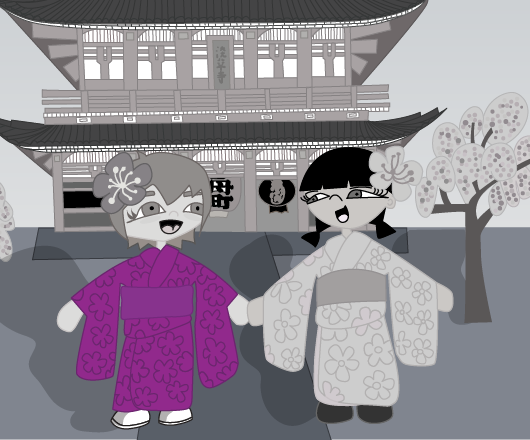 5. There may be more than one story in this book –
5. There may be more than one story in this book –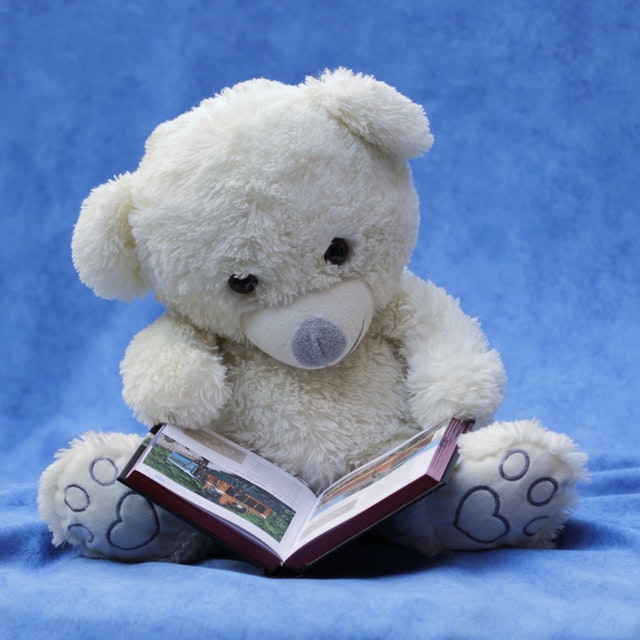 Bilingual books can be a good resource for parents, teachers or carers to teach a target language. But, what are bilingual books? As you can imagine, bilingual books are books that have the same story in two different languages. The text is generally split in each language as the objective for children is to read without mixing languages. This way, for example, the carer that always talks to the child in English, will read the story in English, and the carer that talks in Spanish, will read the story in Spanish. Nowadays, there is more demand for bilingual books in different languages, and while I focus on bilingual books for children in English and Spanish, there are bilingual books in many different combinations. In fact, my local library has books in English-Greek, English-Mandarin, English-Italian and many more. This is because those are the books that the international communities in my city are looking for.
Bilingual books can be a good resource for parents, teachers or carers to teach a target language. But, what are bilingual books? As you can imagine, bilingual books are books that have the same story in two different languages. The text is generally split in each language as the objective for children is to read without mixing languages. This way, for example, the carer that always talks to the child in English, will read the story in English, and the carer that talks in Spanish, will read the story in Spanish. Nowadays, there is more demand for bilingual books in different languages, and while I focus on bilingual books for children in English and Spanish, there are bilingual books in many different combinations. In fact, my local library has books in English-Greek, English-Mandarin, English-Italian and many more. This is because those are the books that the international communities in my city are looking for.